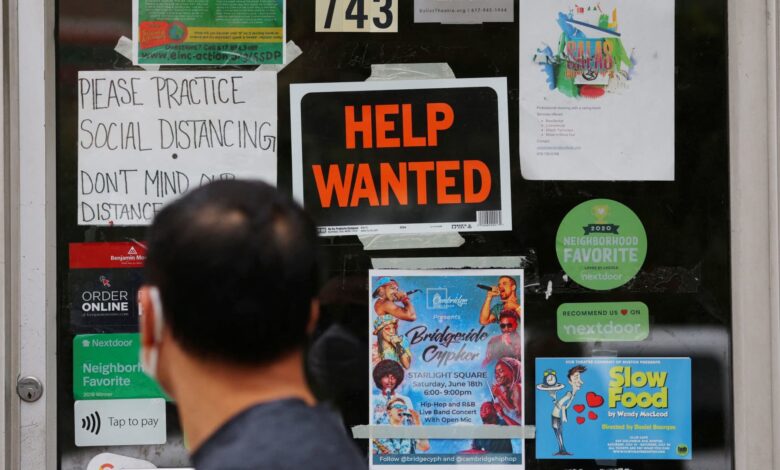The private sector lost 33,000 jobs in June, badly missing expectations for a 100,000 increase, ADP says

FILE PHOTO: A pedestrian passes a “Help Wanted” sign in the door of a hardware store in Cambridge, Massachusetts, U.S., July 8, 2022.
Brian Snyder | Reuters
Private sector hiring unexpectedly contracted in June, payrolls processing firm ADP said Wednesday, in a possible sign that the economy may not be as sturdy that investors believe as they bid the S&P 500 back up to record territory to end the month.
Private payrolls lost 33,000 jobs in June, the ADP report showed, the first decrease since March 2023. Economists polled by Dow Jones forecast an increase of 100,000 for the month. The May job growth figure was revised even lower to just 29,000 jobs added from 37,000.
“Though layoffs continue to be rare, a hesitancy to hire and a reluctance to replace departing workers led to job losses last month,” Nela Richardson, ADP’s chief economist, said in a press release published Wednesday morning.
To be sure, the ADP report has a spotty track record on predicting the subsequent government jobs report, which investors tend to weigh more heavily. May’s soft ADP data ended up differing significantly from the monthly jobs report figures that came later in the week.
This week, the government’s nonfarm payrolls report will be out on Thursday with economists expecting a healthy 110,000 increase for June, per Dow Jones estimates. Economists are expecting the unemployment rate to tick higher to 4.3% from 4.2%. Some economists could revise down their jobs reports estimates following ADP’s data.
Weekly jobless claims data is also due Thursday, with economists penciling in 240,000. This string of labor stats comes during a shortened trading week, with the market closing early on Thursday and remaining dark on Friday in honor of the July 4 holiday.
Service roles hit hardest
The bulk of job losses came in service roles tied to professional and business services and health and education, according to the ADP. Professional/business services notched a decline of 56,000, while health/education saw a net loss of 52,000.
Financial activity roles also contributed to this month’s decline with a drop of 14,000 on balance.
But the contraction was capped by payroll expansions in goods-producing roles across industries such as manufacturing and mining. All together, goods-producing positions grew by 32,000 in the month, while payrolls for service roles overall fell by 66,000.
The Midwest and Western U.S. saw the strongest contractions in June, declining by 24,000 and 20,000, respectively. Meanwhile, the Northeast shed 3,000 roles. The Southern U.S. was the sole region tracked by the ADP to see payrolls expand on net in the month, recording an increase of 13,000 positions.
The smallest firms tended to see more job losses this month than their larger counterparts. In fact, businesses with more than 500 employees saw the biggest payroll growth in the month with an increase of 30,000, per the ADP. By comparison, businesses with fewer than 20 employees accounted for 29,000 lost roles on net.
Annualized income growth decreased modestly from May for both job stayers and hoppers. The rate of pay increase for those staying in their jobs ticked down to 4.4% from 4.5%, while those getting new roles slid to 6.8% from 7%.
The S&P 500 is up more than 4% for the year, posting a stunning comeback in the second quarter after worries about President Donald Trump’s tariff fights nearly sent the benchmark into a bear market.



